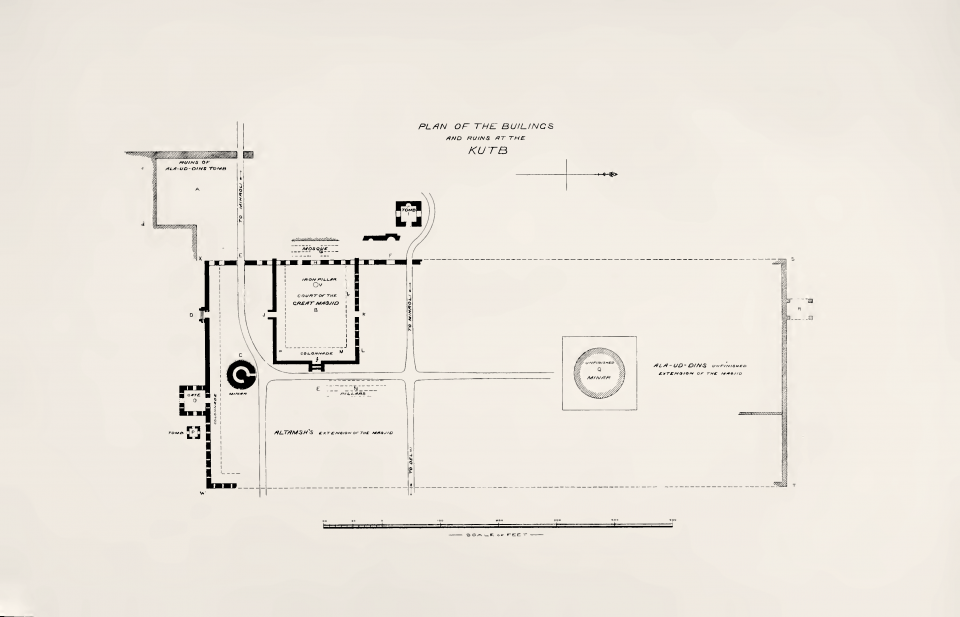ON the northern as well as the southern sides of the court the pillars are all of a much plainer character than on the east, and from their simplicity are, I imagine, of an earlier date. Although evidence of a positive kind cannot be detected, in the shape of corresponding mason-marks in the different detached pieces, as in the case of the five pillars at (a) on Plan II. (see p. 48), these columns have somewhat the appearance of being built of parts, some of which were contiguous portions of the same pillar, in one of the twenty-seven Hindu temples said to have been broken up on this spot. For reasons already cited, the plain character of the stone cutting and the absence of figure carving would have suggested to the Muhammadans the propriety of rebuilding the columns as they existed in situ. It has already been pointed out that one of the pillars in the south-east corner bore the date 1067 A.D. and it was of a kind similar to those here photographed, hence I infer that the pillars in the photograph are the work of the middle of the eleventh century. I think that probability is lent to this supposition by the fact that Anangpal II., whose reign commenced in A.D. 1051, rebuilt Delli in A.D. 1052 and probably built also some Hindu temples. His ancestor, Anangpal I. we know to have been of the Vishnu religion, and he therefore may be presumed to have been of the same persuasion and to have built Brahminical temples—remains of which very possibly are among the materials composing the Colonnade. The pillars in the photograph are similar to those to be found in a large number of Brahminical temples, and have the common characteristics of the square and octagonal section appearing in the same shaft. The primitive mode of decorating a square Hindu column, commenced by cutting off the corners and by a number of plain incisions. As the demand for ornamentation increased, the surfaces of the remaining portions were carved and elaborated in many various ways, and a large number of different modes of treatment are presented in the pillars of the Colonnade.
![The Masjid-i-Kutb-ul-Islam [Quwwat-ul-Islam Mosque]. Pillars in the north Colonnade. The Masjid-i-Kutb-ul-Islam [Quwwat-ul-Islam Mosque]. Pillars in the north Colonnade.](https://architexturez.net/data/styles/large/public/media/masjid-i-kutb-ul-islam-pillars-north-east-corner-colonnade-delhi-1872-b_0.jpg?itok=pMCO4qmL)
